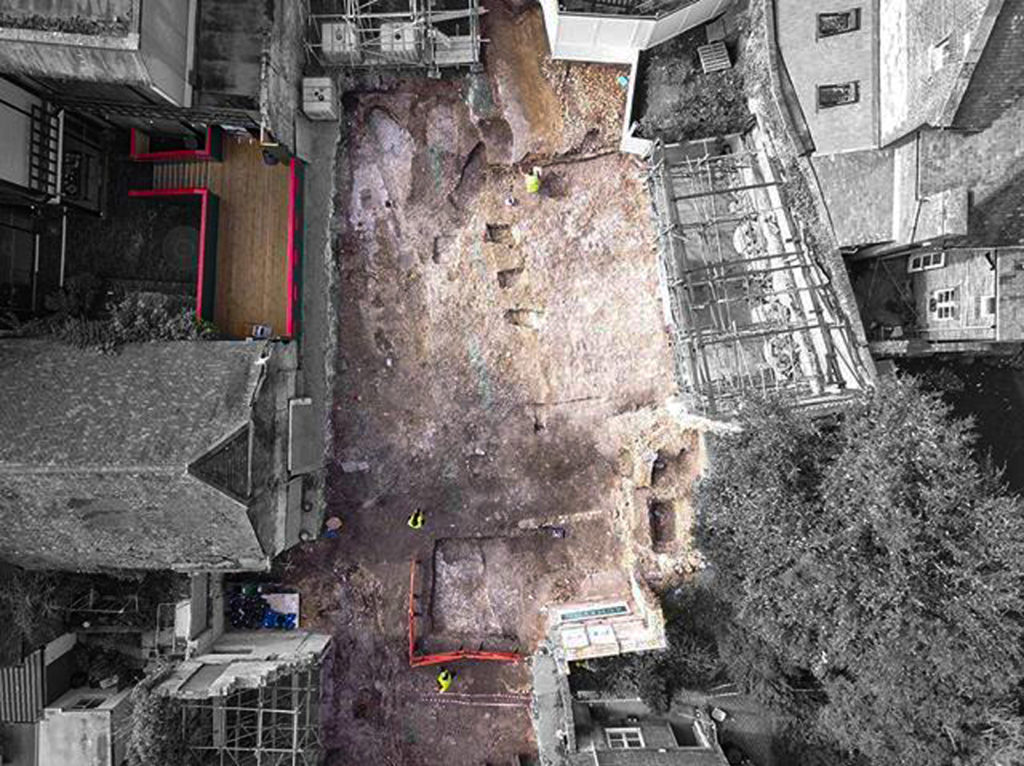News
Archaeology in Action
August 31, 2018
Context One Archaeological Services started the archaeological excavation at Dorset Museum, Dorchester on 25th June 2018.
This is being carried out in advance of the major £14.9 million Heritage Lottery funded Tomorrow’s Museum for Dorset project which transforms the museum into a leading contemporary cultural and heritage centre.
The area being excavated, to the rear of the Museum buildings, is situated in what was the middle of the Roman and medieval town. It was known that archaeological features would be present on the site due to earlier discoveries in this part of Dorchester. Indeed, a workshop built on the site in 1937 cut through part of Roman Street. Although the site was largely built over in the 19th century, recent archaeological test pits showed that there were still some intact archaeological deposits underneath.
In May Context One Archaeological Services carried out historic building recording on the 19th-century buildings before they were demolished. More recently, we supervised the removal of the concrete floors. We started the main excavation work at the end of June, and this will go on through July and the early part of August 2018. We will be continuing to monitor the remaining areas of the site later this year ahead of the building work.
We have identified the foundations of 19th-century buildings, Victorian rubbish pits and fragmentary parts of the Roman street. A number of pits were situated under the floor of what was the Craft Market building with others in the garden to the rear of the houses in Colliton Street and contained various 18th and 19th-century objects, including clay tobacco pipes, bottle glass, pottery, animal bone and oyster shell. They were most likely the domestic refuse from the homes and businesses nearby. Some scallop shells had actually been used to decorate a building in the past – they have nail holes and were impressed into cement and might have decorated something like a garden grotto.
There are Romano-British finds from the site and as well as later objects in the Victorian pits. This includes Romano-British black-burnished ware pottery (manufactured in the Poole Harbour area) some Samian tableware (from Gaul/France), and materials from Roman buildings such as roof tile fragments. These objects came from the underlying Romano-British deposits which had been disturbed by the post-medieval pits and buildings.
The structure of the Roman street can now be seen in several places, and we are beginning to understand how it was constructed. The upper surface is a hard-wearing layer of gravel and grit. We are now excavating the deposits to see whether we can obtain some finds which will provide us with dates for the construction phases. A ditch runs alongside the road, flanking the edge of it. The upper fills have produced a considerable amount of pottery – mainly black burnished ware – and animal bone. This deposit relates to the point that the ditch was no longer being maintained, and was collecting rubbish from the local area. This did include some higher status tableware, including samian.

After cleaning and excavation of the part of the site next to the viewing platform, we have identified two linear cut features which probably represent bedding trenches for Roman buildings which would have stood parallel to the Roman road. They are associated with a number of post-holes, so we now need to figure out the sequence of construction, and the form of the structure(s). Within the footprint of the building, there are deposits containing Romano-British pottery, and there appear to be further features cut into the bedrock below, which we will need to investigate. In addition, we have located a large pit, cut near to the roadside ditch, which contains large dumps of what appears to be demolition rubble from a substantial building, including copious large fragments of ceramic roof tiles and mortar like material. The finds have included two finely made bone hairpins and a piece of wall plaster with green paint.